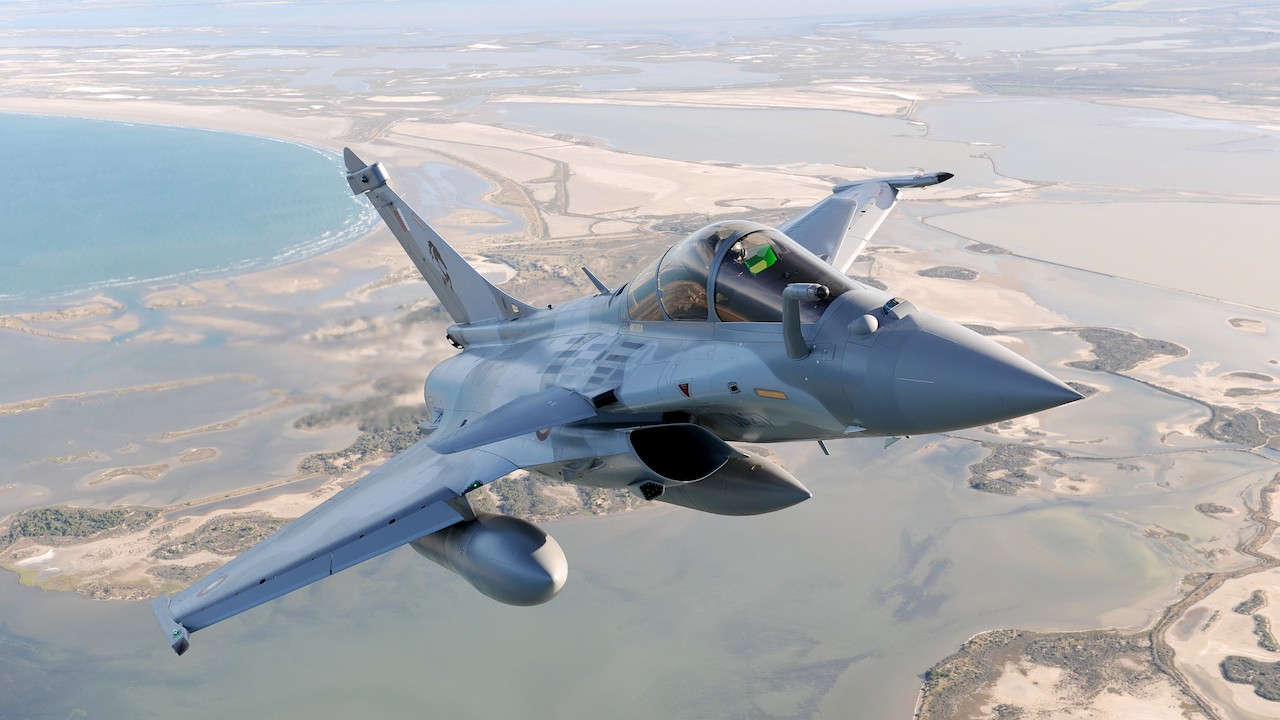Mirage upgrade augments new fighter force

Upgraded F-5s have already entered service and
The Moroccan Mirage F1 upgrade was designed and is being integrated by the new Association Sagem Thales pour la Rénovation d'Avions de Combat (ASTRAC) consortium. This is a joint venture between Thales and Sagem Défense Sécurité (SAFRAN) and was established in November 2005 at the request of the French Ministry of Defence.
ASTRAC aimed to provide an upgrade for remaining Mirage F1 export customers – principally
Thales brought its experience of the Spanish Mirage F1M upgrade to the project, while SAFRAN has played a major role in a number of Mirage and other combat aircraft upgrades, including the upgrade of French Mirage F1C interceptors to multi-role F1CT fighter-bombers.
The ASTRAC consortium put together an upgrade (using the designation MF2000) which transforms the capabilities of the ageing Mirage F1 in both air-to-air and air-to-ground operations, providing a new multi-mode radar, a laser designation pod, new electronic warfare and self-protection systems and giving compatibility with a range of new weapons.
Much of the upgrade is based on technology developed for the latest Mirage 2000 versions (Mirage 2000-5 and 2000-9). The cockpit is transformed, becoming a modern, digital glass cockpit with two-colour multifunction displays replacing the analogue flight instruments and the old analogue Cyrano IV radar screen. The aircraft is also fitted with a new HUD with a broad panel up front control panel (UFCP) and features full HOTAS controls. The aircraft has two SAGEM mission computers interfaced with a MIL STD 1553B digital databus, and a hybrid Sigma IN/GPS. The MF2000 has new secure voice radios, and the cockpit is compatible with a helmet mounted sighting system. Finally, the pilot sits on a modern zero-zero capable ejection seat.
The upgraded Mirage F1 is fitted with a Thales RC400 (RDY3) multi-mode pulse Doppler radar. This is based on the Mirage 2000-5’s RDY radar, but with a smaller antenna giving shorter range.
The Mirage F1’s electronic warfare capabilities are similarly enhanced, with a new digital radar warning receiver (RWR) and an external PAJ FA ECM pod designed to detect, classify and counter search, fire-control, and missile seeker radars. The aircraft is also fitted with Corail flare launchers and Phimat chaff dispensers.
The upgraded Mirages retain their internal 30-mm DEFA cannon with 135 rounds per gun, and augment these with a variety of externally carried weapons. For use in the air-to-air role, the MF2000 can carry AIM-9L/M Sidewinder, Magic 2 or IR MICA missiles with MICA EM available for BVR use.
For air-to-ground missions, the MF2000 can carry a wide range of guided and unguided munitions. Use of the Damocles day/night laser designation pod allows the carriage of a variety of laser-guided bombs, but perhaps the greatest expansion to air-to-ground capabilities is provided by the new AASM precision-guided, stand-off rocket-boosted bomb, supported by a mission preparation system provided by Sagem Défense Sécurité and a debriefing system from Thales.
For more specialised missions, the MF2000 is compatible with the ARMAT anti-radiation missile, and with the MBDA AM39 Exocet anti-ship missile.
Though there have been proposals to re-engine the Mirage F1 (with South Africa successfully integrating a derivative of the MiG-29’s RD-33 engine) the MF2000 retains the basic Snecma ATAR 9K50 engine, though this is ‘optimised’ under the so-called ATAR Gratification programme, with a new compressor module, a redesigned HP turbine, a six per cent increase in mass flow and a 40 per cent increase in turbine entry temperatures combining to increase thrust from 7,200 kg to 7,500 kg.
At the Paris Air Salon at Le Bourget, ASTRAC displayed what purported to be an example of the MF2000 in the aircraft static park though, in fact, the aircraft was a loaned Armée de l’Air Mirage F1CT (No.281), with some cockpit modifications. But though the aircraft wore an interesting black and grey camouflage scheme, it was not fully representative of the Moroccan upgrade configuration.
As it had done when undertaking the Spanish Mirage F1 upgrade programme, Thales gave responsibility for incorporating modifications on the real ‘prototype’ aircraft to
In the case of the Moroccan upgrade, the first two aircraft (173 and one other) were upgraded at
Some 27 Mirage F1s (a mix of Mirage F1CH, F1EH and probe-equipped F1EH-200) will be upgraded to a common MF2000 standard under the ‘F1 Renovation’ programme, at an estimated cost of $420m US.
It has been claimed that with RDY-3 radar and MICA missiles, the upgraded Mirage F1 enjoyed the same BVR air combat capabilities as the Mirage 2000-5, while the combination of Damocles and AASM transforms the aircraft into a ‘pocket Rafale’ in the air-to-ground role.
Though the Mirage F1 has been retired from service in
Also, new customers may emerge for the aircraft retired by Jordan (and France), perhaps including Argentina, which was recently reported to be examining a $100 million proposal to buy 12 ex-Jordanian air force Dassault Mirage F1CJ fighters and one F1BJ trainer, having rejected a Spanish offer for a similar number of F1s. The aircraft would replace the Fuerza Aerea
ASTRAC hopes that many of the Mirage F1s that will be retired by
Stay up to date
Subscribe to the free Times Aerospace newsletter and receive the latest content every week. We'll never share your email address.

